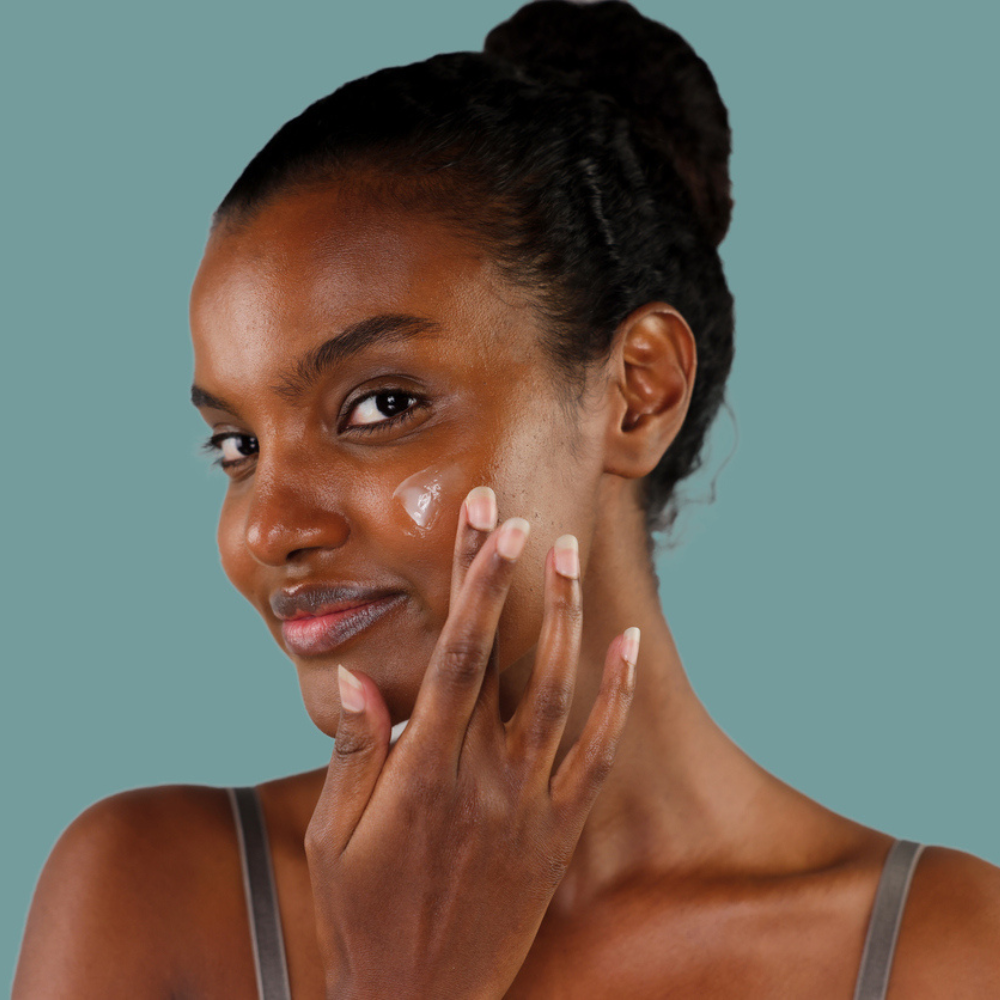How To Get Rid Of Scaly Skin Patches

A creative writer with a voracious appetite for fashion, beauty,…
S
caly skin patches are areas of the skin that become rough, dry, and flaky. They can vary in size and appearance and are often caused by conditions like eczema, psoriasis, fungal infections, or dry skin. These patches may be itchy, red, or inflamed, and can occur anywhere on the body. Treating scaly skin patches usually involves moisturizing, exfoliating, and, in some cases, using medicated creams or seeking medical advice from a dermatologist.
Note: It’s one thing for your skin to be flaky from a lack of moisturizing, but when there’s an underlying skin issue like psoriasis, it’s important to visit a dermatologist to address the situation as soon as possible.
Characteristics of scaly patches
It’s quite easy to recognize scaly patches on the skin, including:
- The affected area may feel rough and dry to the touch, and skin flakes may be present, especially when touched or rubbed.
- The patches may appear red or inflamed, particularly around the edges.
- Also, the skin in the affected area may feel thicker than surrounding areas, and the patches may be itchy or cause discomfort.
- Scaly patches often have defined edges, making them stand out from the surrounding skin.
- They can occur anywhere on the body but are commonly found on elbows, knees, scalp, face, and lower legs.
If you notice these signs, it’s essential to take steps to address them, such as moisturizing regularly and consulting a dermatologist if necessary.
Here’s how to manage this condition

- Use a gentle, fragrance-free moisturizer daily to keep the skin hydrated.
- Gently exfoliate the affected area to remove dead skin cells.
- Over-the-counter creams containing ingredients like salicylic acid or urea can help soften and remove scales.
- Opt for mild, non-irritating cleansers to avoid further drying out the skin.
- Drink plenty of water to keep your skin hydrated from the inside out.
- Use sunscreen to protect the affected area from further damage.
- If home remedies don’t work, consult a dermatologist for further evaluation and treatment options.
When dealing with scaly skin patches, choose skincare products that help moisturize, soothe, and gently exfoliate the affected area. Look for products with the following ingredients:
Moisturizers: Opt for thick, emollient moisturizers that contain ingredients like:
- Hyaluronic acid
- Glycerin
- Ceramides
- Petrolatum
- Shea butter
- Oils such as jojoba, coconut, or almond oil
Exfoliants: Gentle exfoliants can help remove dead skin cells and reduce scaling. Consider products containing:
- Salicylic acid
- Urea
- Lactic acid
- Alpha hydroxy acids (AHAs) like glycolic acid
Anti-inflammatory ingredients: To reduce redness and inflammation, stock up on products with soothing ingredients, such as:
- Aloe vera
- Chamomile
- Calendula
- Oatmeal
Barrier repair ingredients: Ingredients that support the skin barrier function can prevent moisture loss and improve skin texture. These may include:
- Niacinamide
- Panthenol (vitamin B5)
- Squalane
- Allantoin
Steroid creams or ointments: In some cases, your doctor may prescribe topical corticosteroids to reduce inflammation and itching. Follow your doctor’s instructions carefully when using these products.
Antifungal creams: If a fungal infection causes the scaly patches, your doctor may recommend antifungal creams or ointments.
Natural remedies

- Coconut oil: Apply virgin coconut oil to the affected areas to moisturize and soften the skin. Its antimicrobial properties may also help with fungal infections.
- Oatmeal baths: Adding colloidal oatmeal to bathwater can soothe itchy, inflamed skin and help reduce scaling.
- Aloe vera: Apply pure aloe vera gel to the scaly patches to soothe inflammation, hydrate the skin, and promote healing.
- Apple cider vinegar: Dilute apple cider vinegar with water and apply it to the affected areas to help balance pH levels and reduce itching. However, be cautious, as it may irritate some individuals.
- Honey: Apply raw honey to the patches and leave it on for about 20 minutes before rinsing off. Honey has moisturizing and antimicrobial properties that can benefit the skin.
- Tea tree oil: Dilute tea tree oil with carrier oil and apply it to the affected areas to help fight fungal infections and reduce inflammation. Do a patch test first, as some people may be sensitive to tea tree oil.
- Omega-3 fatty acids: Incorporate foods rich in omega-3 fatty acids, such as salmon, flaxseeds, and walnuts, into your diet to help reduce inflammation and improve skin health.
- Probiotics: Consuming probiotic-rich foods like yogurt or taking probiotic supplements could help improve gut health, which can in turn benefit the skin.
- Sunflower oil: Apply sunflower oil to the patches to help hydrate the skin and improve its barrier function.
Finally, it’s important to identify and avoid triggers that worsen your condition, such as certain foods, environmental factors, or stress. While natural remedies can be helpful, consultation with a healthcare professional, especially if you have a severe or persistent skin condition, is necessary. They can provide personalized advice and ensure that natural remedies do not interfere with any prescribed treatments.
Note: Always patch-test new products and introduce them gradually to ensure they don’t exacerbate your skin condition.
Featured image: Tigist Mezzanzanica/iStock
For the latest in fashion, lifestyle, and culture, follow us on Instagram @StyleRave_
All rights reserved. This material, and other digital content on this website, may not be reproduced, published, broadcasted, cached, rewritten, or redistributed in whole or in part without prior express written permission from STYLE RAVE. Use of and/or registration on any portion of this site constitutes acceptance of our Terms & Conditions and Privacy Policy.
—Read also
A creative writer with a voracious appetite for fashion, beauty, lifestyle and culture. As one who's passionate about the advancement of the woman, creating content that inspire smart style and living, and positive lifestyle changes is a calling I take seriously. At Style Rave, we aim to inspire our readers by providing engaging content to not just entertain but to inform and empower you as you ASPIRE to become more stylish, live smarter and be healthier. Follow us on Instagram @StyleRave_ ♥



